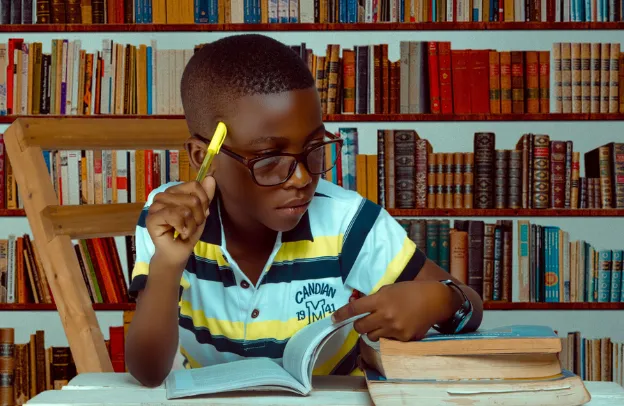5 Important Ways Of Building A Memory Of The Past

Sometimes, the memories of experiences remain crystal clear for our whole life. For example, the moment you said “I do”, or the moment you held your baby in your arms for the first time. Although other significant memories from a long time ago can be troublesome to recall, they may still be with us. But, it just takes some effort to retrieve them.
Want to learn more about storytelling? Start by downloading the first chapter of The Storytelling Series for Small Businesses.
What affects memory retrieval?
Emotion and personal significance play an important role in building a memory of the past. For example, getting married is a highly emotional event for everyone. In that situation, a whole host of brain chemicals activate like these memories are being recorded.
On the other hand, you probably remember what you had for breakfast or lunch that day and what clothes you wore yesterday. But if someone were to ask you about these details in a few days, you’d have no memories of them. This is because they are just not that important to you.
Not only this but sometimes we find it hard to remember even important or special memories. This is because of several age-related factors that contribute to this loss of recall. Although the information retrieval ability peaks between ages 20 to 30, by the time we reach our 50s, the frontal lobes don’t work as well as they used to search for memories before.
Also, if you have not recalled a certain memory in years, it will not be as strong or vivid as it used to be. What happens actually is that when you don’t revisit a memory, your brain thinks that it’s not that important, and eventually other memories may lay on top of it.
When we are younger, just thinking of something (which is an internal cue) can help retrieve a memory. But, as we grow older, we need more external cues to retrieve it – like an image or a sound.
How to build a memory of the past?
Although memories can fade away, there are certain ways to build a memory of the past. However, we are going to discuss the 5 most important ones here.
Cue the memory
While we experience something important or special, our perceptions and senses like images, smells, sounds, tastes, thoughts, touches, or feelings are stored in the cortex of the brain, bound together as a memory by the hippocampus, and then tagged.
This way, the frontal lobes can retrieve the pattern of information later. Therefore, when building a memory from the past, try thinking about the senses that were engaged while the memory was being recorded.
A hint or cue from the environment (like listening to a song) or a cue that you generate (like thinking about your graduation) can aid in retrieving a memory from the past. The more specific cues you use to remember, the more likely it is that you will match a pattern and pull up an old memory.
Strategies to recall
Since you may not recall the cues related to a long-forgotten memory spontaneously, you may have to generate some. Try these strategies to generate the cues for your past memories:
- Cook a meal that your mom or dad used to make for you.
- Hold an old cloth you saved.
- Listen to an old song that you or someone you like loved.
- Look at old photographs of your family, friends, or home.
- Read an old letter, newspaper article, or personal journal.
- Read a poem you liked to read or wrote when you were younger.
- Visit a place from your younger days.
- Smell something like a book, food, perfume, or pillow that may jog your memory.
- Watch an old TV show or movie.
Utilize mnemonics
Mnemonics are the techniques that students often use to aid in recall. It is just a simple way to remember information. However, it is quite useful in building a memory from the past as well. For example, if you need to remember a term, you can associate it with a common item that you are quite familiar with. This way, the familiar item will remind you of the term and you can pull up the memory even after a long time.
Moreover, the best mnemonics include those that utilize positive humor, imagery, or novelty. So, try to come up with a joke, rhyme, or song to help recall a specific segment of information.
Retrieval practice
Retrieval practice is one of the most well-known methods to build a memory from the past or recall information that was previously stored in the memory. It is a straightforward practice that is easily implemented and can greatly improve memory building.
This is because trying to recall a memory can consolidate, modify, and reorganize it better in the long-term memory. It also creates new retrieval pathways to that certain memory, thereby making it easier to retrieve later on.
While searching for a memory, we tend to activate all or some of the information connected to it. This results in linking it in a more organized and networked structure for easier access in the future.
We create long-lasting memories by linking new information that is in our working memory to the knowledge we already have in our long-term memory. This process is called active learning and practicing it helps improve memory retrieval and ultimately helps in building memory from the past.
What happens when it fails?
Another way to build old memories is to look at what happens when it does not happen or when it fails. Theories about why people are not able to recall memories contain an implicit explanation of why other people remember.
When we look at what happens when a certain condition or phenomenon does not take place, it helps us recall almost everything that happened while living that moment.
Conclusion on the 5 Important Ways Of Building A Memory Of The Past
In our journey through life, memories are the tapestry of our experiences, weaving together moments of joy, sorrow, and growth. As we’ve explored the five essential ways of building a memory of the past, it becomes clear that memory is not just a passive observer, but an active participant in our lives.
From capturing life’s details through the lens of mindfulness to preserving cherished moments through storytelling and journaling, we’ve discovered that the past is not a fixed entity, but a dynamic, ever-evolving narrative that we can shape and enrich. By embracing the power of sensory experiences, technology, and meaningful connections, we unlock the door to a treasure trove of memories waiting to be cherished and shared.
With these invaluable tools at our disposal, we can craft a vivid, intricate mosaic of our past, transforming it into a source of wisdom, nostalgia, and inspiration. As we journey forward, let’s remember that our memories are the ink that writes the story of our lives, and by nurturing them, we create a legacy that will stand the test of time.
So, let us embrace these five important ways of building a memory of the past, and paint our own vibrant picture of yesteryears, for in the end, our memories are the true keepers of our unique, beautiful, and ever-evolving stories.
Want to learn more about storytelling? Start by downloading the first chapter of The Storytelling Series for Small Businesses.






